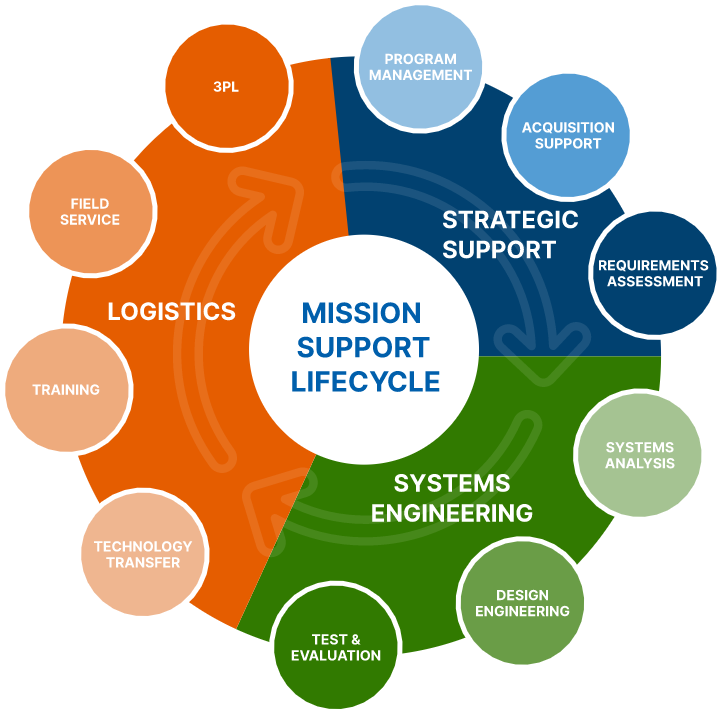 Anthony Cecchini is the President and CTO of Information Technology Partners (ITP), an ERP technology consulting company headquartered now in Virginia, with offices in Herndon. ITP offers comprehensive planning, resource allocation, implementation, upgrade, and training assistance to companies. Anthony has over 25 years of experience in SAP business process analysis and SAP systems integration. ITP is a Silver Partner with SAP, as well as an Appian, Pegasystems, and UIPath Low-code and RPA Value Added Service Partner. You can reach him at [email protected].
Anthony Cecchini is the President and CTO of Information Technology Partners (ITP), an ERP technology consulting company headquartered now in Virginia, with offices in Herndon. ITP offers comprehensive planning, resource allocation, implementation, upgrade, and training assistance to companies. Anthony has over 25 years of experience in SAP business process analysis and SAP systems integration. ITP is a Silver Partner with SAP, as well as an Appian, Pegasystems, and UIPath Low-code and RPA Value Added Service Partner. You can reach him at [email protected].
IT Partners understands that “mission support” is more than a set of processes; it’s the backbone of effective military operations. It encompasses a range of critical functions and services that keep military missions on track, from logistics and technology support to intelligence analysis and personnel management.
As military operations grow increasingly complex, so does the importance of mission support, which ensures that every unit, division, and operation is equipped with what it needs to achieve success. This blog explores the essential aspects of mission support within the DoD as we here at IT Partners see it, illustrating how it enables seamless operations and empowers defense personnel to meet mission objectives.
As with any topic we want to master, lets begin with it’s definition…

Mission support in the DoD refers to a broad suite of services and functions aimed at ensuring that military units have the tools, information, resources, and capabilities required to execute their missions. Mission support encompasses various functions including logistics, personnel readiness, financial management, communications, security, and intelligence. These capabilities create a foundation for operational readiness and allow service members to focus on mission-critical tasks without disruptions caused by logistical or administrative issues.
The DoD’s approach to mission support reflects the reality that military success isn’t solely dependent on combat effectiveness but also on the ability to support and sustain that combat effectiveness over time. In practice, mission support involves everything from ensuring that soldiers have the necessary supplies to deploying cutting-edge technologies that enhance decision-making in real time.
Mission support for the DoD can be categorized into several primary components, each of which plays a vital role in ensuring the success of military operations. Here, we will delve into the main areas that constitute effective mission support:
Logistics and Supply Chain Management
Logistics is often regarded as the backbone of military operations. The DoD’s logistics and supply chain management systems ensure that resources—including ammunition, food, medical supplies, fuel, and equipment—are delivered where they’re needed, when they’re needed. These logistics systems are designed to support operations across the entire spectrum of military activities, whether it’s sustaining personnel during peacetime or mobilizing resources rapidly for conflict situations.
The complexity of military logistics requires a high degree of coordination across multiple stakeholders, including suppliers, transportation providers, and personnel on the ground. Advanced data systems and tracking mechanisms allow the DoD to manage these logistics efficiently, ensuring that supply chain disruptions are minimized. In addition, the Department’s push toward modernizing logistics through automation, artificial intelligence (AI), and big data analytics aims to streamline processes, reduce costs, and enhance readiness.
Personnel Readiness and Training
The readiness of military personnel is central to the DoD’s mission success. Personnel readiness includes recruitment, training, medical and psychological support, and overall personnel management. From ensuring troops are combat-ready to providing specialized training for technical and strategic roles, mission support in personnel readiness enables the military to deploy skilled and prepared forces.
Training in the DoD is not limited to basic training for new recruits but also encompasses advanced training and simulations for specific roles. For instance, cyber warfare specialists, intelligence analysts, and drone operators receive mission-specific training to ensure they are fully prepared for their unique roles. Additionally, continuous professional development programs ensure that military personnel can adapt to new technologies, strategies, and operational environments.
Financial Management
Effective mission support also requires rigorous financial management. The DoD’s budget is allocated to various areas, including operations, personnel, equipment, and research. Within the context of mission support, financial management ensures that funds are available to support readiness and that resources are used efficiently. This includes everything from procuring essential supplies and upgrading facilities to investing in advanced technology that will support future missions.
Financial management systems within the DoD are designed to maintain accountability and transparency while adhering to strict regulatory requirements. To optimize financial support for missions, the DoD increasingly uses data analytics to forecast spending needs, streamline budgeting processes, and monitor expenditure in real time.
Information Technology and Cybersecurity
In an era where military operations depend on real-time information, secure communication networks, and advanced data analytics, information technology (IT) and cybersecurity have become critical aspects of mission support. The DoD’s IT infrastructure includes cloud computing, secure data storage, mobile devices, satellite communications, and other technologies that provide the necessary information and resources to decision-makers on the front lines and at command centers.
Cybersecurity is equally crucial in mission support. The DoD must safeguard its networks against cyberattacks, which are increasingly sophisticated and can disrupt critical operations. Ensuring cybersecurity requires a combination of secure protocols, regular software updates, encrypted communication, and continuous monitoring of network traffic for potential threats. By fortifying its IT and cybersecurity infrastructure, the DoD not only protects its mission-critical data but also enhances the resilience of its operations.
Intelligence and Situational Awareness
Mission support also involves gathering, analyzing, and distributing intelligence that provides situational awareness to commanders and soldiers. Intelligence support helps military units understand potential threats, enemy positions, terrain, weather, and other factors that could impact mission outcomes. The DoD employs various intelligence-gathering methods, including satellite imagery, signals intelligence (SIGINT), human intelligence (HUMINT), and open-source intelligence (OSINT), to create a comprehensive operational picture.
Situational awareness tools provide commanders with real-time data, helping them make informed decisions in complex and dynamic environments. For example, drones and reconnaissance aircraft can provide live video feeds, allowing commanders to assess the battlefield remotely. The fusion of intelligence and situational awareness capabilities ensures that military units are always a step ahead, enhancing the likelihood of mission success.
While mission support is critical to the DoD’s success, it is not without challenges. The scale and scope of DoD operations, combined with the rapidly evolving technological landscape, create several obstacles to effective mission support. Some of the primary challenges include:
Complexity of Global Operations
The DoD operates on a global scale, often in remote and hostile environments. Supporting such extensive operations requires coordinating logistics, personnel, and information across multiple theaters of operation. Each operational environment presents unique challenges, such as harsh climates, difficult terrain, or limited infrastructure, which can impede the delivery of mission support services.
Rapid Technological Advancements
The pace of technological change presents both opportunities and challenges for mission support. As new technologies such as AI, machine learning, and autonomous systems emerge, the DoD must continually adapt its mission support processes to incorporate these advancements. At the same time, these technologies require specialized skills and training, as well as updated policies and cybersecurity measures to ensure they are used effectively and securely.
Cyber Threats
Cybersecurity remains a significant challenge for the DoD, as cyberattacks can target mission-critical infrastructure, disrupt communication, and compromise sensitive information. The DoD faces cyber threats from state-sponsored actors, organized criminal groups, and individual hackers. To counter these threats, the DoD must invest in cybersecurity technologies, establish stringent protocols, and train personnel to recognize and respond to cyber incidents.
Resource Constraints
Despite having one of the largest budgets in the federal government, the DoD still faces resource constraints that impact mission support. Balancing the need for advanced technology, training, and support services with budgetary limits requires careful planning and prioritization. To maximize resources, the DoD employs strategies such as resource sharing, cost-effective procurement, and partnerships with private-sector vendors.
To address the challenges in mission support and enhance operational effectiveness, the DoD is investing in modernization initiatives that leverage technology and innovative practices. Some of the trends and technologies that are reshaping mission support include:
Automation and Artificial Intelligence
Automation and AI have the potential to transform mission support by streamlining processes, improving decision-making, and reducing the burden on personnel. AI algorithms can analyze vast amounts of data to identify patterns, predict equipment failures, and optimize supply chain management. Additionally, automation can improve the efficiency of administrative functions such as personnel management and financial reporting.
Predictive Analytics for Logistics
Predictive analytics uses data to forecast future events and conditions. In mission support, predictive analytics can enhance logistics planning by anticipating supply needs, predicting equipment maintenance, and optimizing transportation routes. By using predictive analytics, the DoD can reduce supply chain disruptions and ensure that resources are available when needed.
Cloud Computing and Data Sharing
Cloud computing allows for the storage and processing of vast amounts of data, making it easier for the DoD to share information across departments, units, and partner organizations. Cloud-based solutions support real-time data sharing, enabling enhanced collaboration and situational awareness. Additionally, cloud services are scalable, providing flexibility for mission support operations that need to expand or contract based on operational demands.
Disconnected Operations
Disconnected operations play a pivotal role in modernizing mission support by ensuring seamless functionality in environments with limited or no connectivity, such as in-theatre operations and supply chain management in remote locations. Leveraging advanced edge computing, mobile platforms, and offline-first design principles, disconnected operations enable teams to execute critical tasks—like inventory tracking, resource allocation, and mission planning—without relying on continuous network access. This resilience is essential for maintaining operational efficiency in austere or contested environments where network disruptions are common. Furthermore, when reconnected, systems synchronize automatically, ensuring data integrity and providing decision-makers with real-time insights. By integrating disconnected operations into mission support, organizations can achieve greater agility, continuity, and effectiveness in delivering supplies and services where they’re needed most.
Enhanced Cybersecurity Protocols
As cyber threats grow more sophisticated, the DoD is adopting advanced cybersecurity measures to protect mission-critical systems. These measures include multi-factor authentication, encryption, zero-trust architecture, and regular vulnerability assessments. By enhancing its cybersecurity posture, the DoD can protect its networks, maintain operational integrity, and mitigate the risk of cyberattacks.
Summary
Mission support is a fundamental component of the DoD’s ability to achieve its objectives. By providing the resources, information, and capabilities needed to sustain military operations, mission support enables the DoD to function effectively in diverse environments and complex scenarios. From logistics and cybersecurity to intelligence and personnel readiness, mission support covers a broad range of activities that are essential for mission success.
As the DoD continues to modernize, mission support will increasingly rely on advanced technologies, innovative practices, and agile methodologies to enhance its effectiveness. By embracing these changes, the DoD can ensure that mission support remains a robust and adaptable framework capable of meeting the challenges of modern military operations. In the dynamic world of defense, mission support will continue to be a driving force behind operational readiness and mission success.





